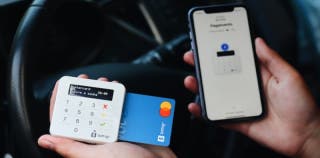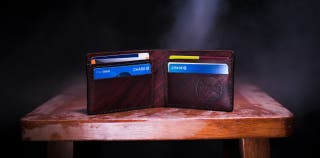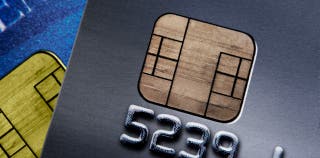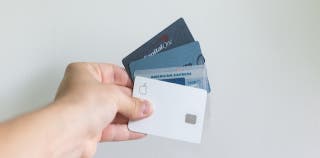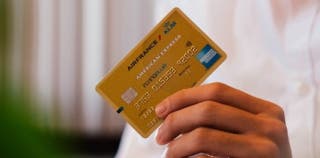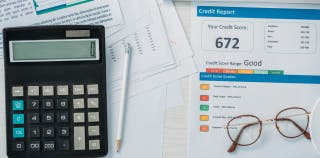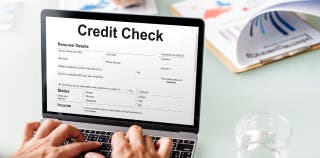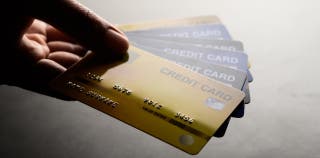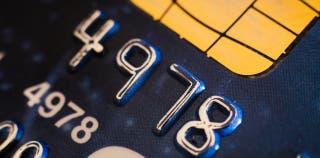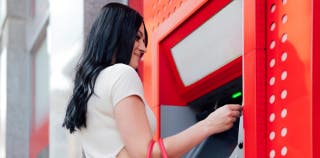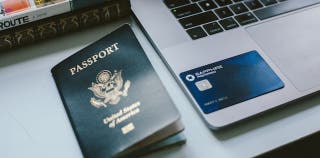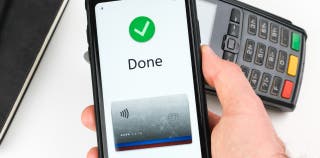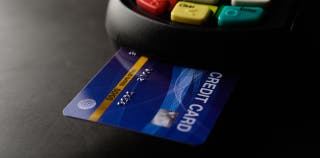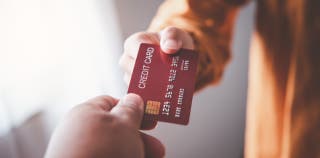What is a credit card number?
The term “credit card number” is used to describe the sequence of numbers listed on the front and the back of a credit card.
Also referred to as a card number, this series of numbers is used to identify you, your card issuer, and the bank that issued your card whenever you go to make a purchase.
You may notice that card numbers are often displayed in sets of four or five numbers listed one after another. While these numbers may seem completely random, they actually tell a story and help accurately identify you, the buyer, while helping prevent fraud.
How long is a credit card number?
The vast majority of credit card numbers are either 15 or 16 digits long, yet the type of card account plays a role in this detail. You’ll also notice that different credit card issuers choose to start their card numbers with a specific digit and that they use the same list of numbers to represent themselves thereafter.
Below you’ll find an overview of each of the major credit card issuers and how many numbers they use on their cards.
Also listed are the first digit each card issuer uses, as well as the numbers they typically use thereafter.
| |
First Six Digits |
Next Five Digits |
Total Number of Card Numbers |
| American Express |
Starts with 3 |
Uses numbers 3 and 4 |
15 |
| Discover |
Starts with 6 |
Varies |
16 |
| Mastercard |
Starts with 5 |
Uses numbers 2, 3, 4, 5, and 6 |
16 |
| Visa |
Starts with 4 |
Uses numbers 2, 3, 4, 5, and 6 |
16 |
The meaning of credit card numbers
According to Discover, the fact each card issuer has a minimum of 15 digits to work with means they have more than a trillion possible card number combinations they can assign to consumers.
Here’s a rundown of each sequence of numbers a credit card has, as well as how they’re used.
First number
The first six number listed on the front or back of a credit card is known as the Major Industry Identifier, or MII. As we already showed in the chart above, American Express starts their card numbers with 3, whereas numbers on a Discover card start with 6, Mastercard starts with 5, and Visa cards start with the number 4.
Identification numbers
After the first number on a credit card, the following five numbers are referred to as the card’s Issuer Identification Number (IIN) or Bank Identification Number (BIN). These numbers also help identify which credit card issuer the card is offered through and which credit card network it runs on.
Account identifier
The next sequence of numbers on the card is used to identify the actual cardholder the credit card is assigned to. That said, the length of the consumer’s actual account number will vary depending on the total length of the credit card number.
Last number: Checksum
The last digit in a credit card number is known as the checksum, and this number shows that a credit card is valid. This number is populated using a formula known as the Luhn Algorithm, and it helps detect errors when credit card numbers are entered when making a payment.
Where is the credit card number?
Credit card numbers are easy to find provided you physically possess the credit card in question.
Generally speaking, the number will be listed clearly on the front of the credit card or in the middle of the back of the card.
Front of a credit card
If you have a Discover card, you’ll find your card number clearly shared on the front of the card. Mastercard typically lists their card numbers on the front of their cards as well, although there are some exceptions.
Visa credit cards also tend to list card numbers on the front, although some of their premium travel credit cards (like the Chase Sapphire Preferred and Chase Sapphire Reserve) have card numbers on the back.
Back of a credit card
American Express credit card numbers are always located on the back of the card.
Other card numbers: The CVV and expiration date
You can find a few other card numbers clearly displayed, although these numbers are not your actual account numbers. Specifically, we are talking about the CVV and the credit card expiration date.
The CVV is a credit card security code that is three to four digits long and printed on the front or the back of a credit card. Where Discover, Mastercard, and Visa have three-digit CVV numbers printed on the back of the card, Amex credit cards have four-digit security codes that are printed on the front.
When it comes to a credit card’s expiration date, it is typically listed in the (MM/YY) format on the back of a credit card. If a card expires in September of 2027, for example, the expiration date will be listed as 09/27.
Other credit card features
Several other credit card features can change the look and feel of your credit card or make purchases safer or more convenient.
Here’s a rundown of some common card features you should know about.
Chip card technology and magnetic stripes
Where older credit cards embed important payment information in a magnetic stripe you “swipe” at the point of sale when making a purchase, others have EMV chip technology that lets you insert or “dip” your credit card into the payment terminal.
Some cards also offer contactless payment options, so you can simply tap your card against the terminal and pay that way.
Customer service phone line
Your credit card will almost certainly have a customer service number listed, which you can call 24/7 with inquiries and questions about your card. If you have a co-branded credit card that’s associated with a frequent flyer program, a hotel loyalty program, or another third-party loyalty program, you may also see a customer service number related to that program as well.
Signature box
The signature box on the back of your credit card is where you sign your name if you want to. Merchants are supposed to compare signatures when you use your card for a transaction that requires one, and not signing your card means it’s more likely you’ll be asked to show identification for in-person transactions.
Hologram security feature
Many credit cards also have a hologram security feature that is made to appear three-dimensional. The purpose of this feature is to prove that a card is genuine and not a counterfeit.
Note that not all credit cards have a hologram security feature, including most American Express credit cards.
5 tips for protecting your credit card number
Keeping your card number private is the best way to avoid having fraudulent purchases show up on your account.
However, you should also know that credit cards come with the best consumer protections among all forms of payment.
In fact, consumers who see fraudulent charges show up on their credit cards are typically protected with $0 liability for fraud policies. Further, the Federal Trade Commission (FTC) notes that federal law limits liability for credit purchases to $50 total if the fraud is reported after the card’s use was noticed.
That being said, you can limit your risk of becoming a victim of credit card fraud with the following tips:























